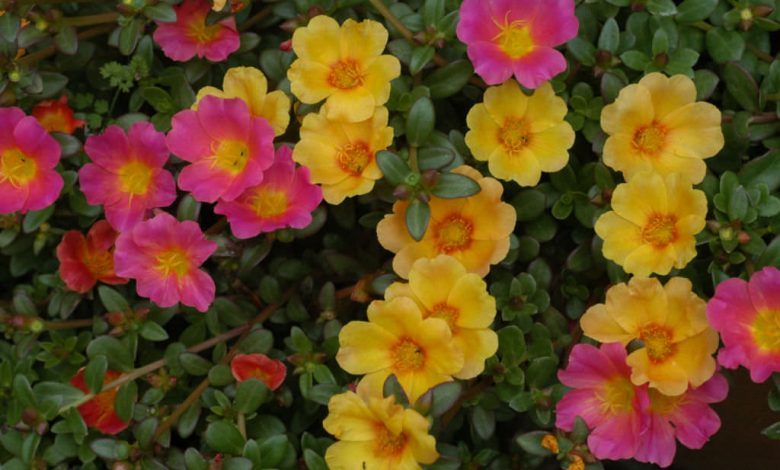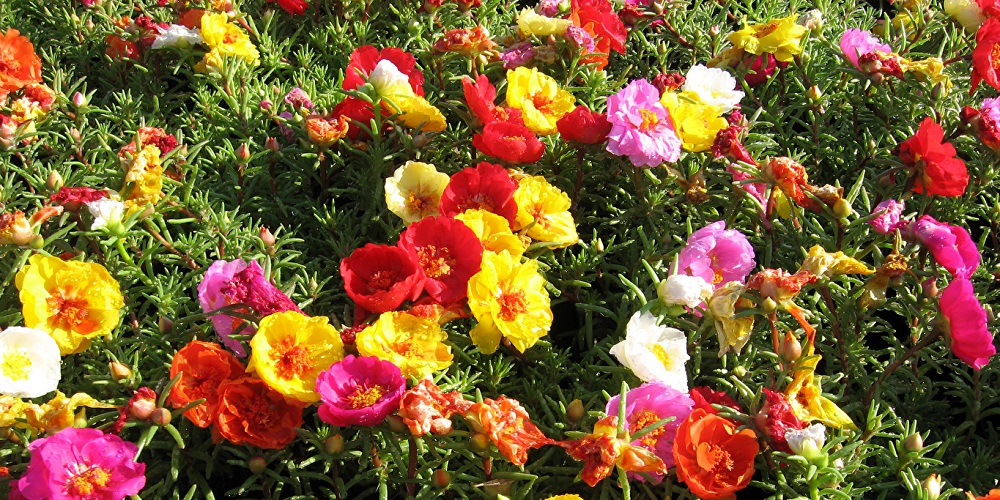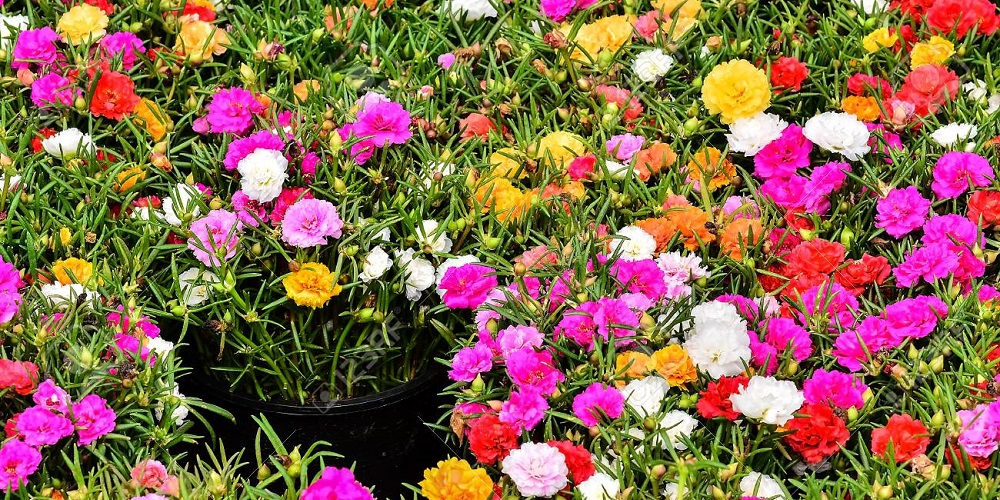Care and watering of the portulaca

Gardening and general plant care can be a very beneficial hobby and, among so many options for growing, the portulaca plant could be one of the easiest to start, thanks to its admirable resistance and determination, even in the face of the elements..
If you have taken an interest in gardening and want to learn about plants that can withstand the sun, the silk flower could be the trailing plant for you.
We are referring specifically to the family of succulent plants known as portulacas. This type genus of the Portulacaceae family comprises approximately 40 to 100 different species, so its characteristics may vary from one plant to another.
Within its taxonomy we find the portulaca umbraticola, which stands out for its brightly colored flowers, and also the portulaca oleracea, commonly known as purslane. The latter is also one of the most popular and easy-care species within the portulaca family.
One of the things that has not allowed this plant to reach its full potential as a decorative option for gardens is that in some places it is considered a weed, due to its type of growth and flowering at dawn.
However, more and more people dare to plant portulacas in their homes and are fascinated by the discreet beauty of the plant that, if placed in the right place, can grow in a very elegant way .
Next, we will review the general care that you should have if you have decided to have a garden of portulacas or purslane at home:
Choose the right place for the portulaca plant
One of the most important steps that you must decide before starting work is where you are going to plant your new portulaca plant. In this case, it is convenient to take into consideration the size that it can have, to ensure that you offer it the necessary space for its correct development.
Consequently, when sowing purslane, the plant can reach a range of between 15 to 30 centimeters, therefore, it is advisable to take its height into account, so that the appropriate location for it is in a pot or in rockeries, if you prefer a much more natural style.

Recommended soil type
Since we are talking about a creeping plant, when planting purslane, its care has a special focus on the type of soil or substrate that you need to use.
In general, it is advisable to do it in sandy soils that facilitate the drainage of water from the purslane, to prevent puddles from forming that can rot the stems. In addition, it cannot be overlooked that the plant itself is capable of storing water, thanks to a special organ of its succulent species.
If you are going to plant it in a pot, the most recommended type of substrate is one specially formulated for succulents or cacti, since these are among the types of plants that need little water and a lot of sun.
Irrigation regularity
The portulaca is a type of plant that requires a certain regularity of irrigation, since, although not much water should be applied, it is necessary to try to keep the substrate slightly moist with the help of watering cans.
During the summer months, it is best to be guided by the state of the substrate where the purslane plant is. When you notice that it begins to dry, you should do a watering session, without overdoing it; just to moisten.
Besides, when you are in the hottest months, which is when flowering usually occurs, experts recommend combining irrigation with liquid fertilizer for flowering.
In case you are in the winter or autumn season, watering should be to a lesser extent, but without neglecting it completely. Remember that succulents have water storage organs.
Sun exposure
Purslane is a creeping plant that can withstand the sun and even takes advantage of it in the morning hours, to open its bunches of leaves and show the colorful flowers for which it is known.
In this sense, and since purslane has flowers that can withstand the sun, you can leave it exposed directly without risk. In addition, some even advise allowing plenty of sun during the hottest months, as this encourages bunches to bloom.
However, you should know that, with a portulaca, its care is also focused on protecting it when temperatures drop or it is very cloudy, because it is not strong enough against cold climates. For this, it is advisable to keep it indoors, until the end of the season.

care pests
If you have purslane in Spain or in any other part of the world, you should probably be aware of the presence of one of the most annoying pests in gardening: the aphid.
This insect can easily and quickly plague a plant by taking advantage of the portulaca’s fleshy stems. They are quite attracted to it and, as soon as you notice one, we advise you to use an anti-pest, to get rid of them and prevent them from affecting your planting.
Keep in mind that an aphid infestation will directly affect the development of the plant and could even kill it, so the problem must be addressed immediately.
Having plants at home can have multiple positive effects both on the body and on the mind, since the care they entail are relaxing and satisfying tasks for those who practice them. In addition, in the case of the portulaca, it does not require investing a lot of money and you can attend to it when you have free time.
Besides, we must consider that the silk flower is a resistant plant that can grow very quickly, so it can quickly become one of the preferred options for beginners in gardening or also to cover vegetable spaces in a short time.


![Photo of How to Plant Nasturtium in your Garden: [Complete Guide and Steps to Follow]](https://www.complete-gardening.com/wp-content/uploads/2022/08/how-to-plant-nasturtium-in-your-garden-complete-guide-and-steps-to-follow-390x220.jpg)

